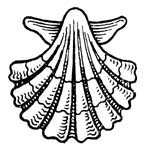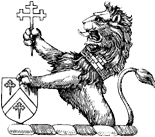
Freedom of Religion — in the Church
ON PILGRIMAGE
It’s 5:15 in the morning. I’m sitting, in the dark, in the rain, in front of Notre Dame Cathedral in Paris.
But I’m not alone. Around me, thousands of fellow Catholic pilgrims from all over the world converge in the plaza before the Parisian Gothic beauty, the symbol of sacred Catholicism in secular France, the nation still heralded as the “eldest daughter of the Church.”
Religious men and priests, wearing traditional black cassocks, cross the cobblestones, splashing through the puddles. Members of the laity, loaded down with backpacks, search for fellow countrymen.
The penitents rush about, preparing for the journey ahead: The 23rd annual, three-day, 72-mile pilgrimage from Notre Dame de Paris to Notre Dame de Chartres.
It’s going to be a tough three days.
The pains and sufferings — of which there will be many endured this 2005 Pentecost weekend — will be offered as a penance for the special intention of the resurrection of the Tridentine Latin Mass.
This gathering in the pre-dawn darkness only adds to the symbolism of the spiritual darkness swallowing up the post-conciliar Church, the Catholic Church born from the minds of men gathered during the four autumnal meetings of the Second Vatican Council (1962-65).
You May Also Enjoy
Laudato Si' has galvanized both groups: Progressives claim it espouses a radical ecological position; traditionalists counter that capitalism is the best hope for the poor.
Considering Dissent from the Perspective of History
Historians whose research centers on the origins of…
After the Council, the majority of both liberal and conservative Catholics have found their standard for belief and conduct in shifting political ideologies.

